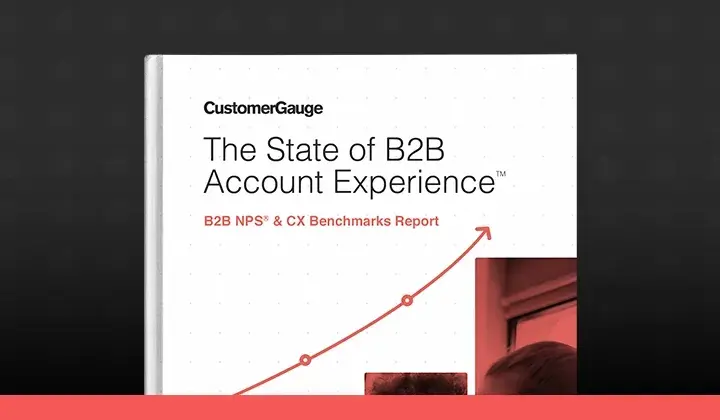[caption id="attachment_14600" align="alignright" width="243"] Michael Redbord[/caption]
Michael Redbord[/caption]
As one of the original advocates of organizing marketing around the way the customer buys, HubSpot structures their entire business around what feels natural to their customers. This focus on the customer's success has allowed Hubspot to enjoy steady growth and become one of the most successful inbound marketing platforms on the market today. As this coincides with what we’ve been preaching for years, we’ve decided to interview Michael Redbord, VP of Global Customer Support and Technical Services at HubSpot.
If you’re as curious as we were about what that philosophy translates to, in the day-to-day operations of this B2B software company, dive in and find out.
It’s not all about the money
To fully embrace customer-centricity, HubSpot looks at a customer relationship from two distinct angles. On the one hand, you find the support and education side of the relationship and on the other, the revenue side.
The support and education side is aimed at ensuring a smooth experience and increasing adoption of the software platform. That’s why, for example, in the HubSpot Academy, users can learn all the ins-and-outs of how to get the most value out of using the software.
The idea is that once the customer starts using the software more and the value is being proven, the revenue side of things - ability to retain and upsell - takes care of itself.
This is a prime example of offering a good overall customer experience and reaping the results that come from that. And to measure how good that experience really is, what better metric to use than Net Promoter®? Today, each customer receives a survey twice a year to be able to track the evolution of customer experience over time. For Redbord, NPS is a referee of the business:
We use Net Promoter as a lagging indicator of how we’re actually doing with our customer experience. If our NPS score is really strong in a certain month or quarter, we tend to look back and say: “Ok, why is that? What have we changed operationally the past three months?
[caption id="attachment_14602" align="aligncenter" width="678"] HubSpot hosts a yearly InBound event for their customers.[/caption]
HubSpot hosts a yearly InBound event for their customers.[/caption]
Customer success based on relationships
The culture of truly caring about the customer also trickles down to the account management level. Because HubSpot is a high-ticket SaaS product, the account managers are in regular contact with their customers to ensure everything is going well.
With such a high-touch model, account managers develop strong relationships with their customers and really understand what they need. Because they are spending so much time on the phone with their customers, they tend to partner with and advocate for their customers pretty strongly. For Redbord this is a good thing because “we have an internal advocate for the customer, which keeps us honest”.
This relationship-based approach to customer success entrusts the account management team with handling the revenue retention and growth of the business. Often, the account manager’s judgment of an account serves quite well to identify at-risk, unhappy customers and happy customers that are ready for upsells. And to further facilitate this judgment, the account manager can rely on Net Promoter as an extra tool in their toolbox to understand the overall health of the account.
Commitment to customer feedback
When starting out with Net Promoter around 2011, the collected feedback was only being accessed by a small group of people. But the tipping point to company-wide embracement came when Redbord made it a point to spread the gospel of NPS to everyone. From that moment, people started reading customer comments and looking at the analyses. After seeing how valuable it really was, it took off. Now a lot more people spend more time talking about it and actually executing on those conversations.
For most B2B companies, not all customers are created equal. But to some extent, HubSpot has a different perspective. As proof of treating every customer as equal, feedback from higher paying customers doesn’t receive any additional weight when considering new features or other improvements. Only when there are requests from many users to improve upon something, will this actually be done.
This is a testament to separating the revenue side from the experience side. But you can be sure that when a survey shows that a big customer is unhappy, their account management will give priority to rescue that account.
Feedback helping support and employee development
Customers are also sent a survey after support inquiries. This feedback is of course used to improve the support environment. But after receiving feedback from customers, the Academy team also gets fed back some of this information. They then try to codify that feedback into real assets that can be used to improve the customer’s experience over time. So the feedback is not only used to solve pressing matters, but also to structurally prevent issues in the future.
Maybe even more interesting, the feedback serves as a guide for employee development, specifically in the support department. Redbord elaborates:
Let’s say there’s some kind of constructive criticism from a customer. This feedback will then be used in a developmentally focused conversation with the support engineers’ manager to outline their next steps of improvements. If, for example, a customer didn’t like being put on hold that much, we will talk about how to improve product knowledge to the point where putting a customer on hold is no longer necessary.
But that’s not the only way HubSpot uses feedback with regards to their employees. They understand that happy employees breed happy customers. Sure, perks like free books, unlimited holidays, etc. help to make employees happy but that's merely one aspect. HubSpot's already collecting feedback from customers to raise customer success, so why not ask feedback from employees to know what can be improved for them? And that is where employee NPS (eNPS) comes in. To indicate how committed HubSpot really is to employee happiness, Redbord explains:
Our eNPS is actually an equally big deal as our customer NPS and support NPS. A company can not thrive if it doesn't take care of its employees.
In conclusion
HubSpot grew their customer base from three customers in 2006 to more than 13.500 today. So embracing this approach clearly pays off. Now, what are the things you can take away from this interview?
- HubSpot’s approach to building a business is optimizing your customer’s experience so the revenue side takes care of itself. They focus on a well-established infrastructure that encourages software adoption to prove the value of the software. Combined with strong, healthy relationships, that’s what has put them on their growth trajectory.
- Involve everyone and embrace feedback at the company level if you want it to make a difference. HubSpot monitors the effects with relational, transactional and eNPS surveys.
- Use Net Promoter as a way of gauging the overall health of your customer accounts.


